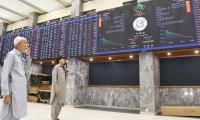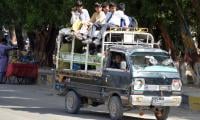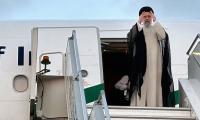LAHORE: Automobile sales may witness a steep downslide of 40-60 percent in fiscal year 2019/20, rendering about 150,000 people jobless, industry forecast suggests.
Auto industry had forecasted to increase its sales to 0.3 million by 2021 and half a million units by 2022; however, changes in the policy, new taxes with increasing input cost and unpredictable surge in rupee-dollar parity resulted in jacking up car prices, which ultimately cut down sales.
Industry sales tumbled against its forecast for the last three months. Similarly, the car and LCV sales went down by 7 percent during the last fiscal to 240,335 units from the previous year. There has been a drastic cut in tractor production also. But more worryingly, the downslide is not stopping in near-to-medium term at least, say market insiders.
From one of the best performing sectors in recent years to the currently bleak scenario, the industry has been prompted to make major revisions in manufacturing plan by the main players and new entrants.
It is based on these factors pointing to 40 percent cut in present level of manufacturing that industry representatives on condition of anonymity point to 100,000 to 150,000 job losses within a year.
As an important indicator, the growth of the auto sector reflects progress of the whole economy. Keeping in view, many believe that the nosedive in auto manufacturing is not an economic slowdown as being anticipated earlier, but a meltdown of the national economy.
The major contributing factors in unprecedented fall in vehicle sales are massive devaluation, new duties and taxes and high energy and interest rates.
The levy of duty in budget 2019-20 is however being termed as counterproductive.
Industry cannot bear the huge impact of five percent Advance Customs Duty (ACD) on all raw materials and imposition of 2.5-7.5 percent Federal Excise Duty (FED), which have badly affected sales and forced major players of the industry to halt production.
Hike in input cost pushed car prices up and resultantly decreased sales. This compelled Honda Atlas to shut down its plant for 10 days with piled up inventories of 2,000 units. Similarly, Indus Motor Company was also planning to stop car production for eight days, two days every week, sources in the industry said.
Another major player Pakistan Suzuki Motor Company would take decisions to reduce production after analysing industry dynamics, market equilibrium and sales trends that would determine the booking orders during the present month.
“It is predictable that Suzuki will also take the same decisions as the overall industry outlook will not change for Suzuki, as Honda and
Toyota in tandem resorted to laying off hundreds of employees after such adverse effects,” sources said.
Talking about demand of auto industry from the government to arrest ongoing declining trend in vehicle sales, an official working with a leading Sindh-based manufacturer said, government should take back recent taxes imposed on auto sector and tighten its control on exchange rate.
He feared vehicles sales plunging 60 percent from earlier levels in the short run. Regarding anticipation of industry about imminent slump in demand, he said auto industry knew that there might be a slowdown, but such drastic meltdown was definitely not being anticipated.
Almas Hyder, one of the top manufacturers of autoparts said present sluggish trend in vehicles sales has been contrary to earlier projections and poses completely new challenges to the industry. Especially, cost escalation due to huge depreciation has been beyond imagination, rendering industry clueless as far as curbing costs was concerned.
Hyder added that the bigger problem with dollar-rupee parity was uncertainty and volatility, hurting sentiments in auto-industry the most. He demanded the government to withdraw taxes and duty announced in budget 2019-20, as these proved counterproductive. Tax collection would not increase as sales were already plummeting due to increase in prices. “The prudent way is to rationalise tax rates to help increase sales by reducing cost of production of auto industry,” he said.
A CFO working with a new entrant in the manufacturing arena said if the government was committed to facilitate the industry, there should be some major decisions, including withdrawing ACD on all imports and FED on assembled cars. Moreover, for the growth of the industry Auto Industry Development Programme (AIDP) 2016-21 should be followed in letter and spirit so the industry could predict and plan accordingly. One after another policy shift could never produce positive results.
Restriction on used vehicles import has been nullified due to negative developments relating to cost of production, he observed on condition of anonymity.
Nabeel Hashmi, one of the leading vendors of export-quality auto parts, expressed serious concerns on up to 35 to 40 percent decline in sales of 1300cc or above engine vehicles. This category was a benchmark for the sector and any dent in these sales was not a good omen for the entire industry. However, he noted lower CC vehicles have not shown such a drop yet.
Probably the current taxation drive was adversely affecting the high-end income groups who were now reluctant to buy a car, said Hashmi, ex-chairman of Pakistan Association of Automotive Parts and Accessories Manufacturers (PAAPAM). Auto parts’ vendors have reduced working days and cut down to single shift operations due to prevalent negative sentiments, while replacement and further hiring has also been stopped.
Another serious issue confronting the auto parts industry is that their part prices are not being increased as rapidly as the rupee devaluations or as quick as the cars, motorcycle or tractor manufacturers raised their own selling prices. This delay is cutting their cash flows seriously and may result in bank defaults soon. OEM’s should ease their price increase rules and the government should help the market utilise the now idle capacities for export purposes, he stressed.
The auto parts domestic aftermarket has turned stagnant with the government-traders tussle, he observed. Job losses were imminent and in progress, he said, adding precise estimate in this regard was too early to suggest.
A representational image showing an oil refinery. — AFP/FileKARACHI: Pakistan Petroleum Limited has announced a...
P@SHA Chairman Zohaib Khan was the esteemed Chief Guest at Aptech 2023. — X/PASHAORG/FileKARACHI: Muhammad Zohaib...
PSX marked the listing of the Mahaana Islamic Index Exchange Traded Fund with a gong ceremony on April 23, 2024. —...
FPCCI Regional Chairman and VP Zaki Aijaz while speaking during a round table discussion on the challenges and...
This representational image shows Gold bars. — AFP/FileKARACHI: Gold prices in the local market fell by Rs7,800 per...
Security personnel walk past the US Federal Reserve building in Washington, DC on Oct 22, 2021. — AFPNew York:...







